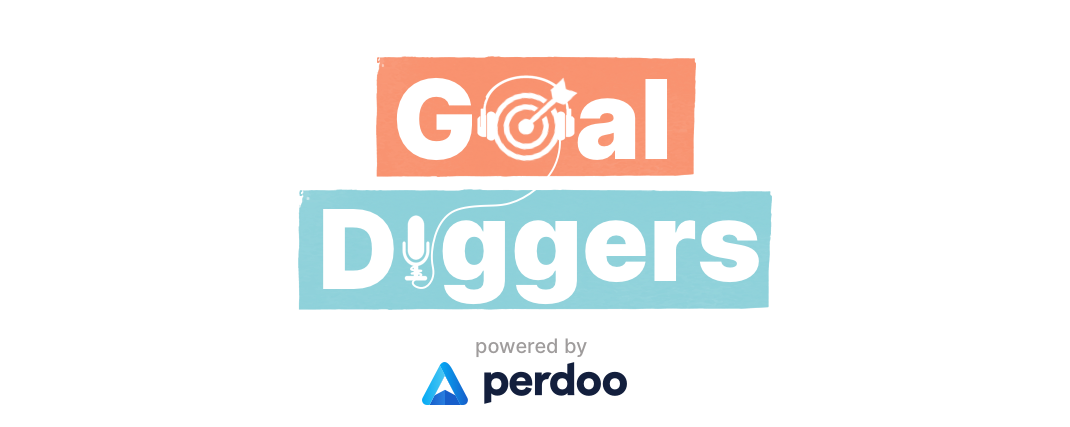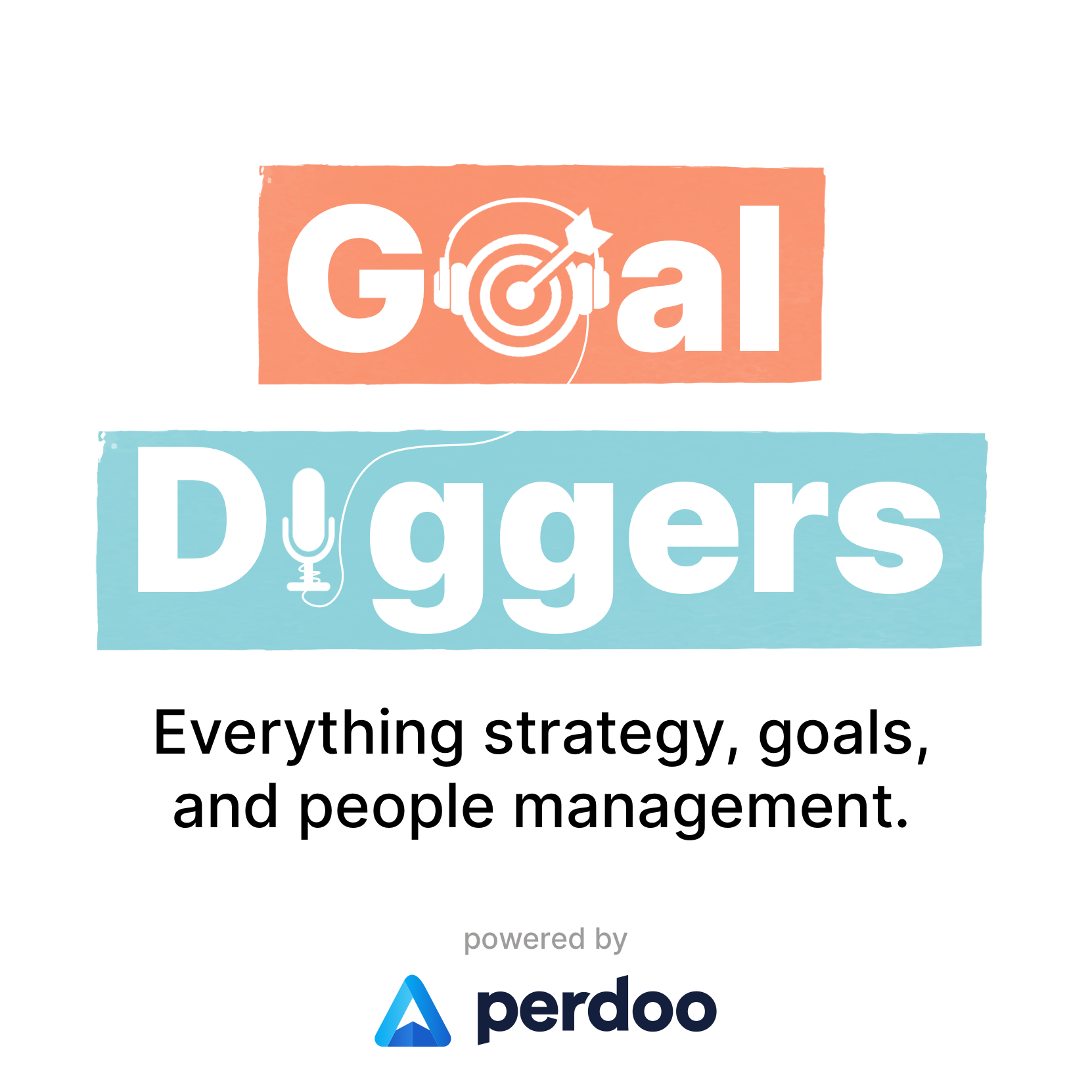Episode 11
Do non-profit organizations need OKR?
The answer is: yes! Just like any organization, non-profit organizations have strategies that need to be delivered. And, OKR is the perfect tool to communicate and execute those strategies. Curious to learn how NPOs roll OKR out and work with the framework?
We spoke to Nathan Friedman, co-President and CMO at Understood (120+ ppl) — a non-profit organization dedicated to helping those who learn and think differently thrive — about their experience working with the OKR framework. Nathan shares why OKR (and KPIs) are key to their organization’s success, the approach they took to successfully rolling OKR out to the entire organization, and the benefits they’ve seen ever since they implemented the framework. He also shares what other NPOs should be focusing on when working with OKR.
-
Curious to learn how other organizations rolled OKR across their organization? Give these episodes a listen:
-
If you're new to OKR or are just getting started, download The ultimate guide to OKR. We'll walk you through everything you need to know to get started with Objectives & Key Results.
And, if you're looking to master the art of setting great OKRs, head over to our newly published (revised edition) eBook on How to write great OKRs.
Start tracking your OKRs (& KPIs) for FREE! Create your own Perdoo account here.
Transcript
Hello everyone.
HJ:And welcome to another episode of Goal Diggers.
HJ:I'm Henrik, founder, and CEO of Perdoo, an OKR software that's
HJ:focused on strategy execution.
HJ:I am the host of today's episode and joining me today is Nathan
HJ:Friedman from Understood.
HJ:Nathan, could you tell us a bit about yourself and also about Understood.
Nathan:Sure thing.
Nathan:First thank you for having me join today.
Nathan:Excited to be here.
Nathan:Um, Understood is a not-for-profit focused on the one in five people who
Nathan:have learning and thinking differences.
Nathan:Learning and thinking differences are learning disabilities and,
Nathan:things like dyslexia or ADHD.
Nathan:And, it is very common, more common than people know.
Nathan:And our focus is not only helping those people, but providing them with
Nathan:community, support and resources to live a thriving, fulfilling life.
HJ:So you say one in five people have those disabilities, 20% of the population?
Nathan:Correct.
Nathan:So in America we did some studies and about 20%, which is about 70 million
Nathan:people have learning and thinking differences, which is astronomically high.
Nathan:And it's one of the things that really touches everybody, regardless
Nathan:of race, ethnicity, income.
Nathan:It is a uniformity across the U S and across the world.
HJ:Okay.
HJ:And the reason I reached out to you and invited you to this podcast is
HJ:that you guys at some point decided to implement OKR is in your organization.
HJ:Could you tell us a bit about why you decided to adopt OKRs at Understood, and
HJ:how you were introduced to the framework?
Nathan:So about two and a half, three years ago, we started looking at our
Nathan:organization and really trying to decide how we could deliver impact at scale.
Nathan:Our mission and vision really shifted about three years ago, as we went
Nathan:through a rethinking of how we could deliver and engage different audiences.
Nathan:And so we became more of a lifelong guide for those who'd
Nathan:learn and think differently.
Nathan:And our mission of shaping the world for different.
Nathan:So everyone can thrive became central and focusing on the individual that
Nathan:has a learning and thinking difference and those influencers around them and
Nathan:how we could deliver impact was a hot topic among the sort of leadership team.
Nathan:And so we began looking for really meaningful ways to really focus our
Nathan:efforts, understanding how we could track progress, and how we get articulate
Nathan:to our teams, the importance of that.
Nathan:We had a ton of metrics and a ton of different Objectives.
Nathan:How did we know what was most important?
Nathan:How could we really focus on what really mattered.
Nathan:And what really began the journey was a book by John Doerr, Measure What
Nathan:Matters, and a subsequent Ted talk and a conversation in our leadership team.
Nathan:And it became apparent to us that we needed a framework that really
Nathan:helped us articulate what we were doing and how we could do it.
Nathan:And that began our journey.
Nathan:It was not always a linear journey as you know, you have to start somewhere
Nathan:and if you don't start somewhere, you never get anywhere, but we needed
Nathan:to begin to implement a framework that really focused our efforts.
HJ:And could you tell us a bit how you decided, I mean, you said that
HJ:it's not implementing OKR is not, it's not a linear progress and then there's
HJ:plenty of obstacles to overcome.
HJ:How did you decide to implement or to roll out OKRs at Understood?
Nathan:Sure.
Nathan:So as we begin to shift our mission and refocus our strategy, it was
Nathan:critically important for us to onboard new people, as well as our
Nathan:existing team members around what we were doing and how we were doing it.
Nathan:Everyone needed a common goal that we were working toward and we
Nathan:understood, we were on a journey to deliver against our mission.
Nathan:And we were on a journey to implement the OKRs, but it really boiled
Nathan:down to number one, making sure everybody was on the same page.
Nathan:Number two, really focusing on the higher value work that would deliver impact.
Nathan:And number three, how did we prioritize the work we were doing?
Nathan:Right.
Nathan:What metrics are really important, what work would really deliver on
Nathan:those metrics and, and looking to see what maybe things we needed
Nathan:to stop, because it really wasn't impactful in the way we thought it was.
HJ:Yeah.
HJ:And did you involve the entire organization early on or did you
HJ:do like a gradual rollout starting with the leadership team first?
HJ:How did you approach those things?
Nathan:So we rolled it out to the entire org.
Nathan:I think it started with the leadership team.
Nathan:Everyone in the organization got the book by John Doerr and everyone
Nathan:also got the Ted talk and we held an offsite — on an all day off-site just to
Nathan:train people on what OKRs are, what the difference between a good and a bad O
Nathan:(Objective), what is a KR (Key Result).
Nathan:You know, and I think it was a longer process and we wanted to start somewhere.
Nathan:So we knew the first time we did it, it wasn't going to be perfect.
Nathan:And it probably wasn't going to be excellent.
Nathan:But I think we wanted to start somewhere and then improve quarter
Nathan:of a quarter, the sharpness of the Objectives, the measurability of the KRs.
Nathan:And then we subsequently rolled out Initiatives.
Nathan:And then after that KPIs, which really helped us bifurcate, what
Nathan:are the key things that really are going to keep our business going
Nathan:on a day-to-day basis and we need to ensure work, which are the KPIs.
Nathan:And how is that different from the Key Results, which were, how are we measuring
Nathan:the impact and how is that laddering up to the overall organizational Objectives?
HJ:It sounds like a very healthy..
HJ:sounds like you had very realistic expectations going into this,
HJ:like we're also speaking to other organizations that they implement OKR.
HJ:And within the first quarter they expect magical returns on those investments.
HJ:Which of course aren't..
HJ:Aren't happening.
Nathan:No, very much so and I think the one thing to also
Nathan:understand is that everybody's different familiarity with OKRs.
Nathan:Sometimes people will work with it in their own organization
Nathan:or a previous organization.
Nathan:And you need a norm around what it means for your organization.
HJ:That's, that's a very good point.
HJ:Could you tell us a bit what were like the biggest challenges
HJ:that you've, that you've faced?
HJ:And do you think these challenges are unique because you're a
HJ:nonprofit, or do you think these are generic challenges that you
HJ:think many organizations would have.
Nathan:So, Understood feels and operates very much like a traditional company.
Nathan:And we've purposefully done that because we want to, not get sidetracked or away
Nathan:from our mission and really be implicit and explicit in what we do and don't do.
Nathan:I think that the ability that we have to roll this out helped
Nathan:in a couple of different ways.
Nathan:And the challenges we face, I don't think are abnormal to
Nathan:any company rolling it out.
Nathan:I think number one was getting everybody aligned to what OKRs are, and using
Nathan:the same terminology, vernacular.
Nathan:So when we could have conversations, people knew what we were talking about
Nathan:and I think some of the other challenges were really around what matters.
Nathan:And bifurcating what matters versus what people prefer to do.
Nathan:And that can be a hard concept or process, because a lot of times,
Nathan:particularly in not-for-profit, but that you have to separate what is actually
Nathan:delivering impact and what is a personal favorite project and what is something
Nathan:that is, that needs to be, let go of.
Nathan:Any company has that.
Nathan:And you can see that with any for-profit companies like Coca
Nathan:Cola is going through it now by shutting down some favorite brands.
Nathan:Other organizations are taking a hard look at what they do so
Nathan:they can really deliver impact.
HJ:Yeah.
HJ:What did you use by the way to develop that common language and that common
HJ:understanding in the organization?
HJ:You mentioned you went on an offsite, which I think is
HJ:interesting, this thing, of course, to get everyone on the same page.
HJ:Are there other things that you do, like, do you have a, something like a glossary
HJ:that people can refer to for these terms?
Nathan:We we do.
Nathan:And I think it starts with a common understanding of the leadership team
Nathan:and in a unified leadership team that can articulate what we're trying to
Nathan:do and how we're trying to do it.
Nathan:I think working pre COVID is different than during COVID.
Nathan:So our offsites were obviously pre COVID.
Nathan:But I think when we rolled those out, it was really giving the team an
Nathan:understanding of what we were trying to do, why we're trying to do it.
Nathan:Create a glossary of terms then made available through our intranet, using
Nathan:a software system like Perdoo to help really share the information both
Nathan:horizontally and have the reporting vertically so people can understand
Nathan:where things are at in a given time.
Nathan:And, and I think the recaps that we do both mid-quarter and a
Nathan:quarter really helped because it brings people along on the journey.
Nathan:So not as it just the leadership team or the level below the leadership team.
Nathan:But how do we articulate it to the overall company?
Nathan:So people can see themselves in the work that we're doing.
Nathan:See themselves in not only the KRs, Objectives, Initiatives, but
Nathan:the KPIs as well, because that creates a sense of collaboration.
Nathan:And that creates a sense of unity.
Nathan:When everybody can see their work as written down as something that's
Nathan:important for the organization.
HJ:And what's been the response like from all your people?
Nathan:It's been overwhelmingly positive.
Nathan:I think that there's the software and Perdoo and the coaching
Nathan:we've received has helped us tremendously throughout that process.
Nathan:I think it's a continual journey.
Nathan:Right.
Nathan:And I think, you know, how do we make sure that we're continuously
Nathan:measuring the right things.
Nathan:I think the pandemic gave us an opportunity to rethink our objectives.
Nathan:As many businesses had to rethink what they do and how they do it.
Nathan:So I think that was a opportunity for us to pause, not to say pause
Nathan:with work, but pause in our thinking and say, okay, are these really now
Nathan:the right objectives given what's happening in the external environment?
Nathan:And really being externally focused versus internally focused was also helpful.
HJ:Yeah.
HJ:Yeah, and I mean, you've mentioned many, many benefits already.
HJ:Were there certain benefits from this whole initiative that you had
HJ:going on that you didn't expect?
HJ:Or were there any surprises for you?
Nathan:I think the surprise for me was how challenging it is at first,
Nathan:but the benefit far outweighs that challenge and it could be daunting.
Nathan:But what we decided to do was to break that up into digestible pieces, not to
Nathan:make sure that we were being perfect after the first quarter, giving ourselves
Nathan:the room for improvement quarter over quarter, helped bring everybody along.
Nathan:We tell this funny story, the first time we did OKR is we had 19 objectives.
Nathan:And that is just crazy.
Nathan:If you think about it.
Nathan:And as we went on, we now have five objectives and defined
Nathan:initiatives that ladder up to that.
Nathan:And impactful metrics that we can derive and monitor on a regular basis.
Nathan:So it really helped us to narrow our focus.
Nathan:Allow people to make their own decisions on our teams as to whether what
Nathan:they're working on is impactful or not.
Nathan:And therefore now allowed us to prioritize initiatives and let go of
Nathan:things that while we may have liked that we're not really delivering
Nathan:the impact that we're looking for.
HJ:Yeah.
HJ:Cool.
HJ:And were there any benefits that you're expecting from
HJ:this that haven't materialized?
Nathan:I think there aren't necessarily benefits that haven't materialized.
Nathan:I'm excited to continue the journey.
Nathan:Yeah, I think we can always get better and refine what we do.
Nathan:I think, as we ourselves do external validation of our hypothesis and
Nathan:testing and qualitative research, how do we make sure that qualitative
Nathan:behavior change and attitude change gets incorporated into our OKRs.
Nathan:I know we're working through different integrations of our own
Nathan:software into our OKR platforms.
Nathan:So how do we make sure we're measuring twice and cutting once, so to speak.
Nathan:How do we make sure that the proxy metrics ladder up to the real world
Nathan:metrics that we're looking to deliver.
Nathan:And how do we make sure that OKR is continue to support us
Nathan:as we evolve along our journey.
HJ:Cool, I think one of the main takeaways I have from this conversation
HJ:is how important it appears to be, to be realistic with your expectations.
HJ:And I, I see so many organizations have these unrealistic expectations and then
HJ:they face a wall and then their resistance start brewing in the organization.
HJ:So I think it's really cool that you guys took this approach.
HJ:Is there any other advice that you could share specifically for
HJ:nonprofit organizations that are looking to get started with OKRs or
HJ:maybe for organizations in general?
Nathan:Sure.
Nathan:I think it was something that we haven't done and purposefully haven't done is,
Nathan:driven OKRs down to the individual level.
Nathan:We started by and we'd learned that doing it by a team level, didn't
Nathan:quite deliver the integration and collaboration we were looking for.
Nathan:So we have a singular set of OKRs for the organization
Nathan:versus OKRs for each function.
Nathan:And that was something we had to learn.
Nathan:We originally started doing it by function and found that didn't work.
Nathan:For organizations that are focused on not-for-profit or impact,
Nathan:you know, we we'd recommend.
Nathan:The same thing that you would for a regular company.
Nathan:What are you actually trying to do?
Nathan:Start with that core?
Nathan:What is your mission?
Nathan:So you don't stray from that.
Nathan:And then what are those proxy metrics?
Nathan:If it's a digital product or what are the the ancillary metrics that ladder up
Nathan:to the impact you're looking to deliver.
Nathan:Really focus on those and then link those to your objectives.
Nathan:And I think starting from that top-down approach will help clarify
Nathan:not only what you do, how you do it and streamline communication and
Nathan:collaboration and enable collaboration.
HJ:Cool.
HJ:Nathan, thank you so much for joining us on this episode today.
HJ:I think it was really helpful.
HJ:And, yeah, again, thanks for sharing your advice and sharing
HJ:your experiences with us today.
Nathan:And feel free to visit us at u.org.
Nathan:If you'd like more, more help or any information on learning disabilities.


